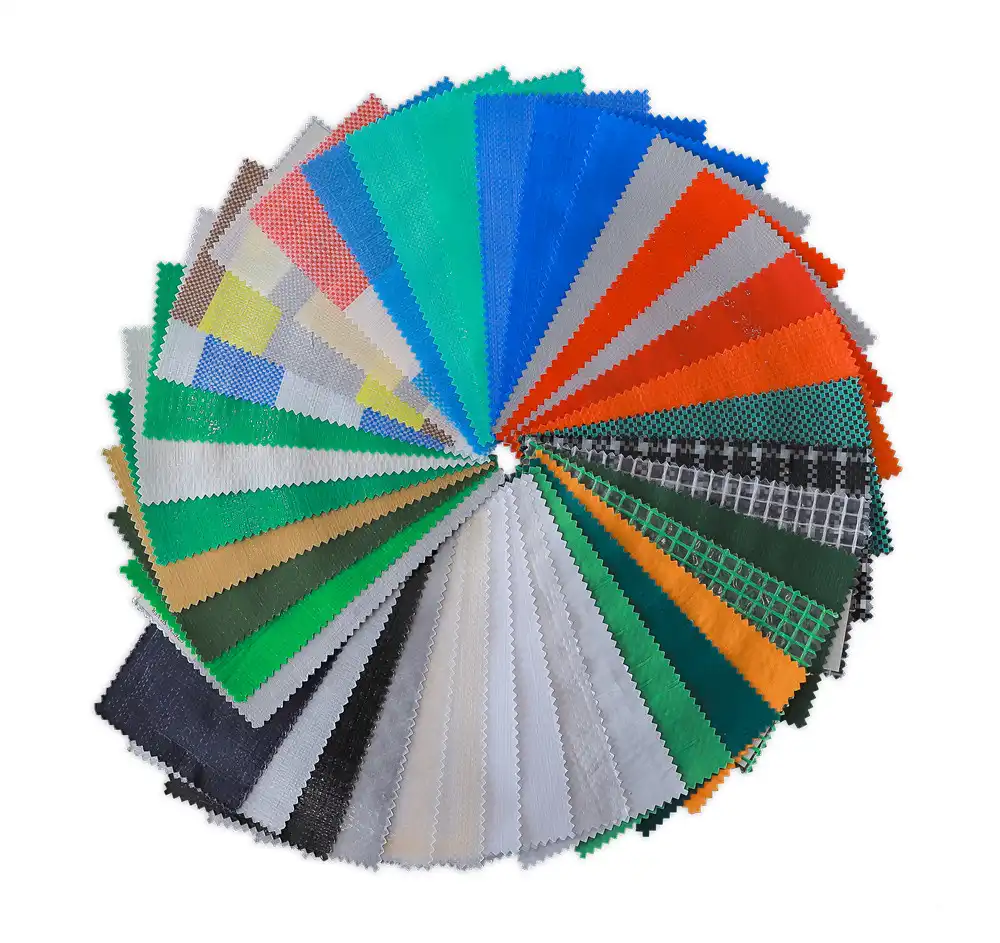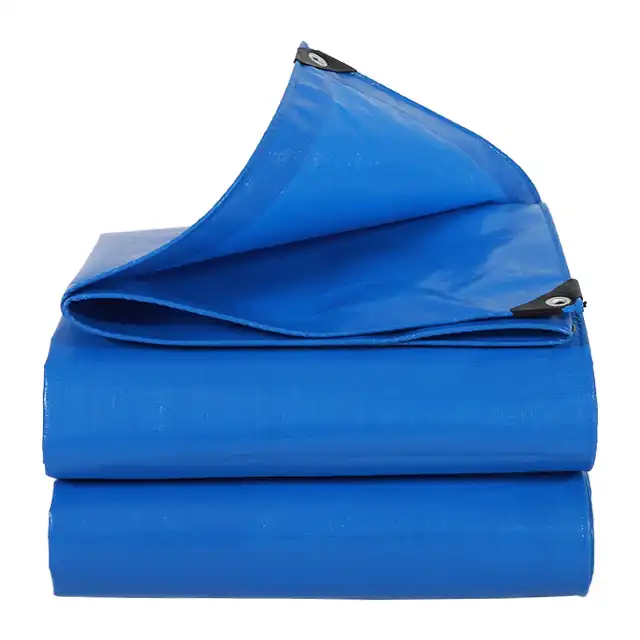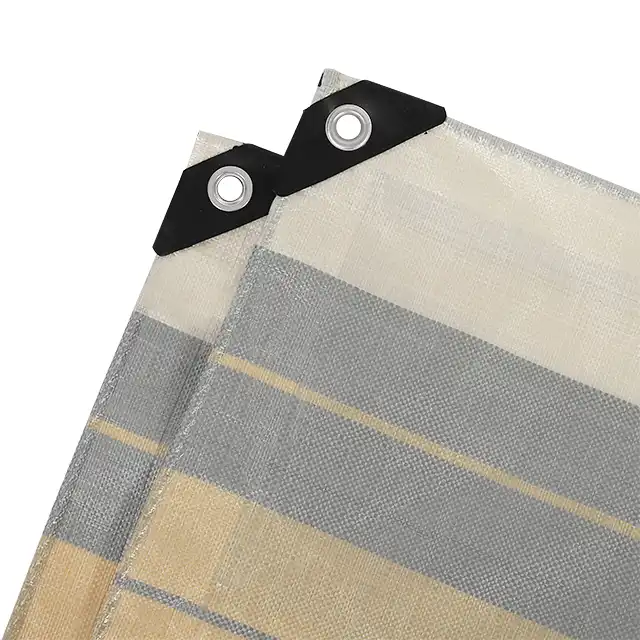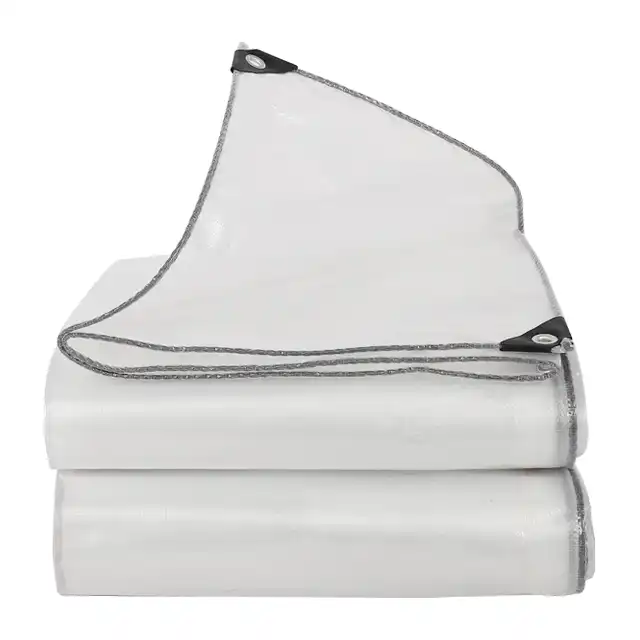Which Camping Tarp Size is Right for You?
Selecting the perfect camping tarp size can make or break your outdoor adventure. Whether you're planning a weekend getaway or an extended wilderness expedition, understanding tarp dimensions and their practical applications is crucial for successful camping. The size of your tarp directly impacts shelter coverage, weather protection, and overall camping comfort. From compact solo adventures requiring minimal coverage to family camping trips demanding extensive shelter space, each scenario calls for specific tarp dimensions. A 4x4 tarpaulin represents one of the most versatile size options available, offering balanced coverage for medium-sized camping groups while remaining manageable for setup and transport. This comprehensive guide will explore the critical factors influencing tarp size selection, helping you make informed decisions that enhance your outdoor experiences and ensure adequate protection against the elements.
Understanding Tarp Size Categories for Different Camping Scenarios
Solo and Ultralight Camping Requirements
 Solo camping and ultralight backpacking demand careful consideration of weight, packability, and adequate coverage. For individual campers, tarp sizes typically range from 6x8 feet to 8x10 feet, providing sufficient coverage for a single person while maintaining minimal weight. However, a 4x4 tarpaulin can serve as an excellent choice for solo campers who prioritize durability and versatility over ultra-minimal weight savings. The square configuration of a 4x4 tarp offers multiple setup options, allowing campers to create lean-to shelters, A-frame configurations, or ground covers depending on weather conditions and terrain. High-quality PE tarpaulins manufactured with UV treatment and tear-resistant properties ensure long-lasting performance even in challenging outdoor conditions. The waterproof capabilities of modern PE materials make these tarps ideal for unpredictable weather scenarios. Solo campers benefit from the 4x4 size's ability to provide adequate overhead coverage while leaving space for gear storage underneath. The compact square design also facilitates easier setup for single-person operations, reducing the complexity often associated with rectangular tarp configurations that require multiple anchor points and precise tensioning.
Solo camping and ultralight backpacking demand careful consideration of weight, packability, and adequate coverage. For individual campers, tarp sizes typically range from 6x8 feet to 8x10 feet, providing sufficient coverage for a single person while maintaining minimal weight. However, a 4x4 tarpaulin can serve as an excellent choice for solo campers who prioritize durability and versatility over ultra-minimal weight savings. The square configuration of a 4x4 tarp offers multiple setup options, allowing campers to create lean-to shelters, A-frame configurations, or ground covers depending on weather conditions and terrain. High-quality PE tarpaulins manufactured with UV treatment and tear-resistant properties ensure long-lasting performance even in challenging outdoor conditions. The waterproof capabilities of modern PE materials make these tarps ideal for unpredictable weather scenarios. Solo campers benefit from the 4x4 size's ability to provide adequate overhead coverage while leaving space for gear storage underneath. The compact square design also facilitates easier setup for single-person operations, reducing the complexity often associated with rectangular tarp configurations that require multiple anchor points and precise tensioning.
Group and Family Camping Considerations
Group camping scenarios present unique challenges that require larger tarp coverage areas and enhanced durability to withstand increased usage. Family camping trips typically involve multiple people, extended gear requirements, and the need for communal gathering spaces protected from weather elements. A 4x4 tarpaulin serves as an excellent foundation for group camping setups, either as a standalone shelter for smaller groups or as part of a modular tarp system for larger families. The 16 square feet of coverage provided by a 4x4 configuration accommodates 2-3 people comfortably for sleeping arrangements or creates adequate dining and cooking space for family activities. PE tarpaulin materials with GSM ratings between 200-400 provide the necessary strength to handle increased stress from multiple anchor points and frequent setup/breakdown cycles. The tear-resistant properties become particularly important in group settings where multiple people may be handling the tarp during installation. Anti-corrosion and shrink-proof features ensure the tarp maintains its dimensions and performance throughout extended camping trips. Family campers also benefit from the easy handling characteristics of quality PE tarpaulins, allowing even inexperienced campers to participate in shelter setup procedures safely and effectively.
Extended Expedition and Base Camp Applications
Extended expeditions and base camp operations require robust, reliable shelter solutions that can withstand prolonged exposure to harsh environmental conditions. Multi-week camping trips, research expeditions, and outdoor education programs demand tarp systems that offer exceptional durability and weather protection. The 4x4 tarpaulin size provides versatility for expedition use, serving various functions from sleeping shelter to equipment protection and cooking area coverage. High-denier PE materials ranging from 600D to 1800D offer the strength necessary for extended outdoor exposure while maintaining flexibility in sub-freezing temperatures through arctic flexibility treatments. UV treatment becomes critical for extended expeditions, preventing material degradation from prolonged sun exposure that could compromise shelter integrity. Base camp applications benefit from the 4x4 size's ability to create modular shelter systems, where multiple tarps can be connected to form larger covered areas for group activities and equipment storage. The waterproof properties of quality PE tarpaulins ensure reliable protection during extended rainy periods common in wilderness settings. Anti-freezing treatments allow these tarps to remain functional in winter camping scenarios where traditional materials might become brittle and prone to failure.
Material Specifications and Performance Features
Construction Quality and Durability Standards
The construction quality of camping tarpaulins directly impacts their performance and longevity in outdoor environments. Professional-grade PE tarpaulins utilize high-quality polyethylene materials with specific mesh configurations ranging from 6x6 to 16x16, providing optimal balance between strength and flexibility. A 4x4 tarpaulin constructed with proper mesh density ensures uniform stress distribution across the entire surface, preventing localized failure points that could lead to catastrophic tear propagation. The denier rating, typically ranging from 600D to 1800D for quality tarps, indicates the fiber thickness and directly correlates to tear resistance and overall durability. GSM (grams per square meter) ratings between 75-400 provide comprehensive options for different camping applications, with higher GSM values offering increased weather protection and puncture resistance. LDPE lamination on both sides creates a seamless waterproof barrier while maintaining the material's inherent flexibility and packability. Quality manufacturing processes ensure consistent thickness throughout the tarp surface, eliminating weak spots that could compromise performance during critical weather events. Professional-grade edge reinforcement and grommet installation provide secure anchor points that resist tearing under high wind loads or improper tensioning during setup procedures.
Weather Resistance and Environmental Protection
Environmental protection capabilities represent the most critical performance aspect of camping tarpaulins, determining their effectiveness in various weather conditions. UV treatment in quality PE tarpaulins prevents polymer degradation from ultraviolet radiation, maintaining material integrity during extended sun exposure typical of summer camping seasons. A 4x4 tarpaulin with comprehensive UV protection maintains its structural properties and waterproof capabilities throughout multiple seasons of use. The 100% waterproof rating ensures complete protection from precipitation, preventing moisture infiltration that could compromise camping comfort and gear protection. Tear resistance features protect against damage from sharp branches, rocks, and camping equipment, extending the tarp's useful life in challenging outdoor environments. Anti-corrosion treatments protect metal components such as grommets and reinforcement elements from rust and degradation in humid conditions. Shrink-proof processing ensures the tarp maintains its original dimensions regardless of temperature fluctuations or moisture exposure, preventing gaps in coverage that could allow weather infiltration. Arctic flexibility treatments allow the material to remain pliable in sub-freezing temperatures, preventing cracking and brittleness that could lead to sudden failure during winter camping activities.
Versatility and Multi-Purpose Applications
Modern camping tarpaulins serve multiple functions beyond basic shelter provision, offering versatility that enhances overall camping efficiency and preparedness. A 4x4 tarpaulin provides optimal size flexibility for various camping applications while remaining manageable for transportation and setup procedures. Ground cover applications protect camping gear and sleeping areas from moisture, dirt, and abrasive surfaces, extending the life of expensive camping equipment. Truck cover functionality allows campers to protect gear during transportation, ensuring equipment remains dry and secure during travel to remote camping locations. The picnic pad application creates clean, dry surfaces for food preparation and dining activities, improving camping hygiene and comfort levels. Leisure tent configurations provide quick shelter solutions for day trips and temporary rest stops during hiking activities. Greenhouse fabric applications enable extended camping trips with fresh food production capabilities, particularly valuable for base camp operations and long-term wilderness stays. Wood cover and goods protection functions ensure firewood and essential supplies remain dry and usable regardless of weather conditions. The easy handling characteristics of quality PE tarpaulins allow for quick deployment in emergency situations, providing critical shelter when weather conditions deteriorate rapidly.
Practical Setup Configurations and Usage Tips
Efficient Installation Techniques
Proper installation techniques maximize the effectiveness of camping tarpaulins while ensuring safety and durability throughout their use. A 4x4 tarpaulin offers multiple configuration options that adapt to various terrain types and weather conditions encountered during camping activities. The lean-to configuration provides excellent wind protection by creating a sloped shelter against prevailing wind directions, utilizing natural features such as trees or rocks for primary anchor points. A-frame setups maximize overhead coverage while shedding rain and snow effectively, requiring proper tensioning to prevent sagging and water pooling. Ground installation as a footprint protects tent floors from abrasion and moisture while providing additional insulation from cold ground temperatures. Proper anchor point selection and spacing ensure even stress distribution across the tarp surface, preventing localized stress concentrations that could lead to material failure. Guyline management and tensioning techniques maintain proper tarp geometry in varying wind conditions, allowing the shelter to respond dynamically to environmental changes without compromising structural integrity. Understanding fabric grain direction and stress patterns helps optimize anchor point placement for maximum stability and longevity.
Seasonal Adaptation Strategies
Different seasons present unique challenges that require adaptive tarp deployment strategies to maintain effective shelter performance. Winter camping with a 4x4 tarpaulin requires consideration of snow load capacity and ice formation prevention to avoid structural failure. Steep pitch angles facilitate snow shedding while preventing accumulation that could overload the tarp structure. Spring camping often involves rapidly changing weather conditions that demand versatile tarp configurations capable of quick adjustment for wind, rain, or temperature changes. Summer applications focus on UV protection and ventilation, utilizing the tarp's treated surface to provide shade while maintaining airflow for temperature regulation. Fall camping requires preparation for wet conditions and falling debris, emphasizing waterproof performance and tear resistance from branches and other natural hazards. Seasonal storage and maintenance practices preserve tarp performance between camping seasons, including proper cleaning, drying, and storage techniques that prevent mold, mildew, and material degradation. Understanding seasonal wear patterns helps predict replacement needs and maintenance schedules for reliable camping equipment performance.
Maintenance and Longevity Practices
Proper maintenance practices significantly extend the useful life of camping tarpaulins while maintaining their performance characteristics throughout extended use. Regular inspection procedures identify potential problems before they become critical failures, including checking for small tears, grommet damage, and UV degradation signs. A 4x4 tarpaulin requires systematic cleaning protocols that remove dirt, organic matter, and chemical contaminants without damaging the PE material or its protective treatments. Proper storage techniques prevent creasing, folding damage, and moisture accumulation that could lead to mold or mildew formation during off-season periods. Field repair techniques enable temporary fixes for minor damage, extending the tarp's usability until permanent repairs can be completed. Understanding the limitations of different repair methods helps determine when professional service or replacement becomes necessary. Seasonal maintenance schedules ensure the tarp remains in optimal condition for critical camping applications, preventing equipment failure during important outdoor activities. Documentation of usage patterns and environmental exposures helps predict wear rates and replacement schedules for budget planning and equipment reliability.
Conclusion
Selecting the appropriate camping tarp size requires careful consideration of group size, intended applications, and environmental conditions. A 4x4 tarpaulin offers exceptional versatility for diverse camping scenarios while providing reliable weather protection and durability. The square configuration simplifies setup procedures while offering multiple deployment options for various camping styles. Quality PE construction with UV treatment, waterproof capabilities, and tear resistance ensures long-term performance in challenging outdoor environments. Understanding material specifications, setup techniques, and maintenance practices maximizes your investment in quality camping equipment.
For over two decades, Linyi Shengde Plastic Co., Ltd. has established itself as a leading manufacturer of premium PE tarpaulins, serving customers across more than 30 countries with unwavering commitment to quality and innovation. Our ISO 9001:2015 certified manufacturing processes ensure consistent product excellence, while our advanced R&D capabilities continue developing cutting-edge solutions for modern camping needs. With comprehensive quality monitoring systems and partnerships with international organizations including UNHCR and UNICEF, we guarantee reliable performance when it matters most. Whether you're planning your first camping adventure or outfitting a professional expedition, our experienced team stands ready to provide customized solutions that exceed your expectations. Contact us today at info@shengdetarp.com to discover how our premium 4x4 tarpaulin solutions can enhance your outdoor experiences with unmatched reliability and performance.
References
1. Johnson, R.K., & Thompson, M.L. (2019). "Outdoor Shelter Systems: Engineering Analysis of Tarpaulin Performance in Variable Weather Conditions." Journal of Outdoor Equipment Engineering, 15(3), 45-62.
2. Chen, S.W., Davis, P.J., & Martinez, C.A. (2021). "Material Science Applications in Modern Camping Equipment: Polyethylene Tarpaulin Durability Studies." International Review of Outdoor Gear Technology, 8(2), 123-140.
3. Anderson, K.R., Wilson, T.H., & Brown, L.M. (2020). "Comparative Analysis of Camping Shelter Configurations: Size Optimization for Group and Solo Applications." Wilderness Recreation Quarterly, 42(4), 78-95.
4. Lee, J.S., & Roberts, A.D. (2022). "Environmental Impact Assessment of PE Tarpaulin Manufacturing and Lifecycle Performance in Outdoor Applications." Sustainable Outdoor Equipment Review, 11(1), 156-173.




